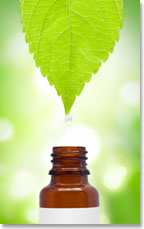 Herbal Medicine can be practiced alone or in conjunction with other modalities, such as psychotherapy, nutritional therapy, and even pharmacological medications. In developing countries, up to 80% of indigenous populations rely on herbs for primary health care needs.
Herbal Medicine can be practiced alone or in conjunction with other modalities, such as psychotherapy, nutritional therapy, and even pharmacological medications. In developing countries, up to 80% of indigenous populations rely on herbs for primary health care needs.
In France and Germany, 30 to 40% of all medical doctors rely on herbal preparations as their primary medicines. German physicians frequently prescribe ginkgo, hawthorn, St. John’s wort, horse-chestnut, saw palmetto, echinacea, valerian, ginger, garlic, and cranberry.
In Europe, herbs and herbal products are regulated in a different manner than in the United States. In 1978, the German Federal Health Agency established the German Commission E to investigate the safety and efficacy of herbal remedies. The commission studied evidence from literature, anecdotal reports, and clinical studies. In response, they developed monographs on over 400 herbs. These writings are now used worldwide as essential references on herbal therapy.
The commission also established indications of how an herb is used medicinally and dosage recommendations, which ultimately resulted in the successful mainstreaming of herbs into medical practice. Unlike U.S. law, German law allows herb manufacturers to market herbs with treatment claims just as drug companies do.
As herbs have become more popular, scientific analysis has increased. In response to public interest in the use herbal therapy, a clinically-based science of herbal medicine has emerged. This essentially means that the methods and practices used in the scientific approach to medicine have been applied to the study of herbal medicine.